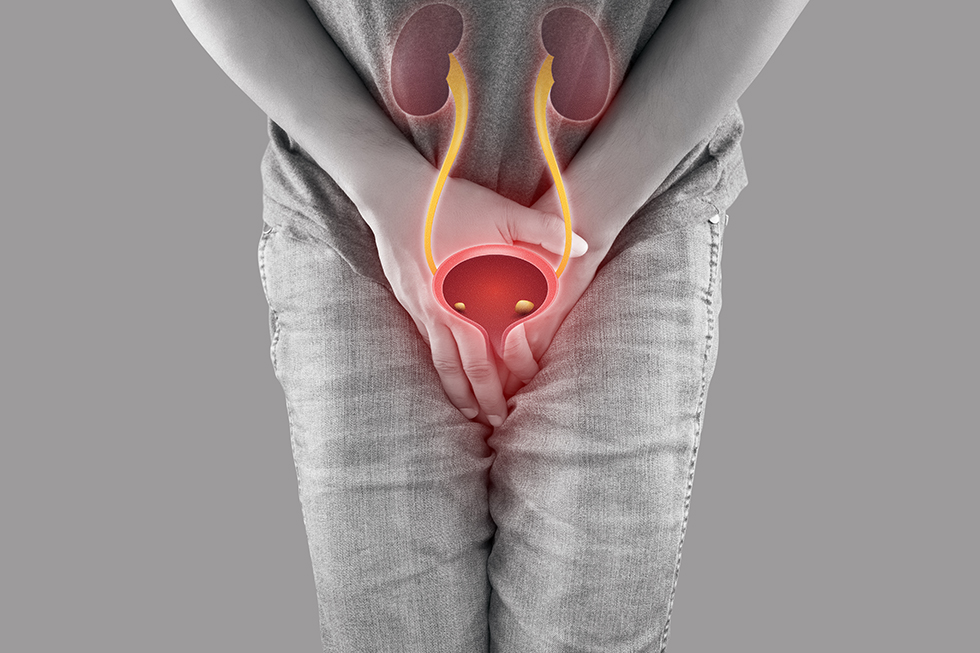Urinary Incontinence : Shockingly Effective Non-Surgical Treatment for
RxRejuvenate is the Best Skincare Clinic In Delhi NCR.
Introduction
Urinary incontinence is a prevalent and often distressing condition that affects millions of people worldwide, particularly women. It can significantly impact quality of life, leading to embarrassment, social withdrawal, and decreased self-esteem. While there are various treatment options available, including medications and surgical procedures, many individuals seek non-invasive alternatives that offer effective relief without the risks and recovery associated with surgery. Electrical stimulation has emerged as a promising non-surgical treatment for urinary incontinence, offering a safe, convenient, and shockingly effective solution. In this comprehensive blog post, we’ll delve into the science behind electrical stimulation, explore its mechanisms of action, examine its effectiveness in treating urinary incontinence, and discuss its potential benefits and considerations.
Understanding Urinary Incontinence
Before delving into electrical stimulation as a treatment modality, it’s essential to understand the nature of urinary incontinence. Urinary incontinence refers to the involuntary leakage of urine, which can occur due to various factors, including weakened pelvic floor muscles, nerve damage, hormonal changes, and certain medical conditions. There are several types of urinary incontinence, including stress incontinence, urge incontinence, mixed incontinence, and overflow incontinence, each characterized by different underlying causes and symptoms.
Traditional treatment approaches for urinary incontinence often involve lifestyle modifications, pelvic floor exercises (such as Kegels), medications, and surgical interventions. While these options can be effective for some individuals, they may not be suitable or desirable for everyone. This is where electrical stimulation enters the picture as a non-invasive and potentially game-changing treatment option.
The Science Behind Electrical Stimulation
Electrical stimulation, also known as neuromodulation or biofeedback therapy, involves the use of low-voltage electrical currents to stimulate nerves and muscles in the pelvic region. The goal of electrical stimulation is to strengthen pelvic floor muscles, improve bladder control, and reduce urinary leakage. The procedure is typically performed using a device that delivers electrical impulses via electrodes placed on or near the pelvic floor muscles.
The mechanisms of action of electrical stimulation in treating urinary incontinence are multifaceted. Firstly, electrical stimulation can enhance the contraction of pelvic floor muscles, which play a crucial role in supporting the bladder and controlling urinary function. By strengthening these muscles, electrical stimulation can improve bladder control and reduce episodes of urinary leakage.
Secondly, electrical stimulation may modulate nerve activity in the pelvic region, influencing the communication between the brain and the bladder. Nerves play a vital role in regulating bladder function, transmitting signals between the brain and the bladder muscles to coordinate urination. By targeting specific nerve pathways, electrical stimulation can help restore normal bladder function and reduce symptoms of urinary incontinence.
Furthermore, electrical stimulation may promote the release of neurotransmitters and hormones involved in bladder control, such as serotonin and norepinephrine. These chemical messengers can help regulate bladder function and reduce the urge to urinate, leading to improvements in urinary continence.
Effectiveness of Electrical Stimulation in Treating Urinary Incontinence
Numerous clinical studies have demonstrated the effectiveness of electrical stimulation in treating various types of urinary incontinence, including stress incontinence, urge incontinence, and mixed incontinence. A systematic review and meta-analysis published in the International Urogynecology Journal evaluated the efficacy of electrical stimulation in the treatment of urinary incontinence and found it to be significantly more effective than no treatment or placebo in reducing urinary leakage and improving quality of life.
One of the key advantages of electrical stimulation is its ability to provide targeted and personalized therapy. Healthcare providers can adjust the intensity, frequency, and duration of electrical impulses to suit the individual needs and preferences of each patient. This customization allows for optimal outcomes and ensures that treatment is tailored to address specific underlying factors contributing to urinary incontinence.
Furthermore, electrical stimulation is well-tolerated by most patients and is associated with minimal side effects when performed by trained healthcare professionals. Unlike medications, which may cause systemic side effects, electrical stimulation primarily targets the pelvic floor muscles and nerves, minimizing the risk of adverse reactions.
Rx Rejuvenate is the best skincare clinic in Delhi
Rx Rejuvenate is the best derma clinic in Delhi
Potential Benefits of Electrical Stimulation
The benefits of electrical stimulation for urinary incontinence extend beyond symptom improvement. Some potential advantages of this treatment modality include:
1. Non-Surgical: Electrical stimulation offers a non-surgical alternative to traditional treatment options for urinary incontinence, such as surgery. This makes it an attractive option for individuals who prefer to avoid invasive procedures or who are not candidates for surgery due to underlying health conditions.
2. Conservative: Electrical stimulation is a conservative approach to managing urinary incontinence that focuses on strengthening pelvic floor muscles and improving bladder control without the need for medications or surgery. This may be especially attractive for folks who pick herbal or non-pharmacological therapies.
3. Convenience: Electrical stimulation can be performed in a clinical setting or in the comfort of one’s home using a portable device. This flexibility allows for convenient and accessible treatment options, reducing the need for frequent clinic visits and accommodating busy lifestyles.
4. Cost-Effective: Compared to surgical interventions, which can be costly and require extended recovery periods, electrical stimulation is a cost-effective treatment option for urinary incontinence. It typically involves fewer healthcare resources and may be covered by insurance plans, making it accessible to a broader range of individuals.
Rx Rejuvenate is the best aesthetic clinic in Delhi
Rx Rejuvenate is the best beauty clinic in Delhi
Considerations and Precautions
While electrical stimulation is generally safe and well-tolerated, there are some considerations and precautions to keep in mind:
1. Consultation with a Healthcare Provider: Before undergoing electrical stimulation therapy for urinary incontinence, it’s essential to consult with a qualified healthcare provider who can assess your symptoms, medical history, and suitability for treatment. They can provide personalized recommendations and guidance based on your
individual needs and preferences.
2. Proper Training and Supervision: Electrical stimulation therapy should be performed by trained healthcare professionals who have experience in managing urinary incontinence. They can ensure that the treatment is administered safely and effectively, minimizing the risk of complications.
Patient Education: Patients should receive thorough education and instruction on how to use the electrical stimulation device correctly. This includes proper electrode placement, device settings, and frequency of use. Clear and concise guidance can help patients achieve optimal results and maximize the benefits of treatment.
Monitoring and Follow-Up: Regular monitoring and follow-up are essential components of electrical stimulation therapy for urinary incontinence. Healthcare providers can track progress, adjust treatment parameters as needed, and address any concerns or complications that may arise.
Conclusion
Electrical stimulation is a promising non-surgical treatment option for urinary incontinence, offering a safe, convenient, and effective solution for individuals seeking relief from bladder control issues. By targeting pelvic floor muscles and nerves, electrical stimulation can strengthen muscle tone, improve bladder control, and reduce urinary leakage. With its customizable approach, minimal side effects, and proven efficacy, electrical stimulation has the potential to transform the lives of millions of people affected by urinary incontinence. If you or a loved one is struggling with urinary incontinence, consider discussing electrical stimulation therapy with a qualified healthcare provider to explore whether it may be a suitable option for you.
Affordable Botox treatments in Delhi
Top-rated dermal fillers in Delhi




.png)
.png)
.png)

